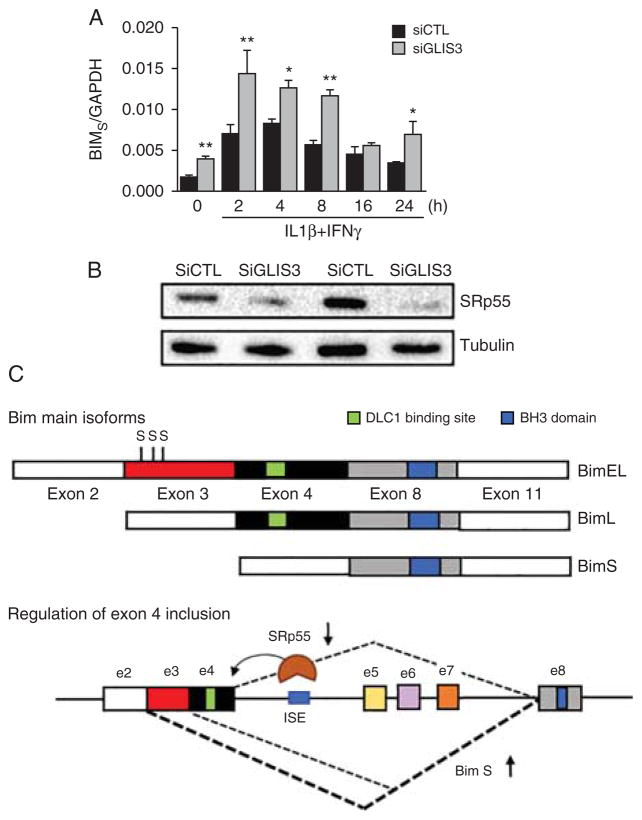Figure 3.
The T1D and T2D candidate gene GLIS3 regulates splicing of the pro-apoptotic BH3-protein Bim through modulating expression of the splicing factor SRp55. Insulin-producing INS-1E cells were transfected with control or GLIS3 siRNA. After 48 h, cells were incubated with cytokines and collected at different time points for real-time PCR analyses. (A) mRNA expression of Bim S after GLIS3 KD. Results are means±S.E.M. (n-4). *P<0.05, **P<0.01 and vs siCTL. Paired t test. (B) Representative blot of two independent experiments showing SRp55 protein expression after GLIS3 silencing. (C) Schematic representation of BIM isoforms and its regulation by SRp55. The BIM gene contains 11 exons that are alternatively spliced to produce isoforms with different pro-apoptotic properties. Bim EL and Bim L, but not Bim S, contain exon 4 coding for a DLC1 binding site that allows sequestration to the cytoskeleton and consequent decrease in pro-apoptotic effect. In addition, Bim EL contains exon 3, which encodes for three serine residues (shown with S) that are subject to phosphorylation, thus targeting the isoform for proteosomal degradation. Bim S is not subject to any known post-translational regulation, being the most potent apoptosis inducer among the three isoforms. SRp55 promotes the inclusion of exon 4 through binding to a predicted ISE located in intron 4 (126). Thus, decreased expression of SRp55 leads to increased Bim S expression and consequent augmented apoptosis. Data adapted from reference (105).

